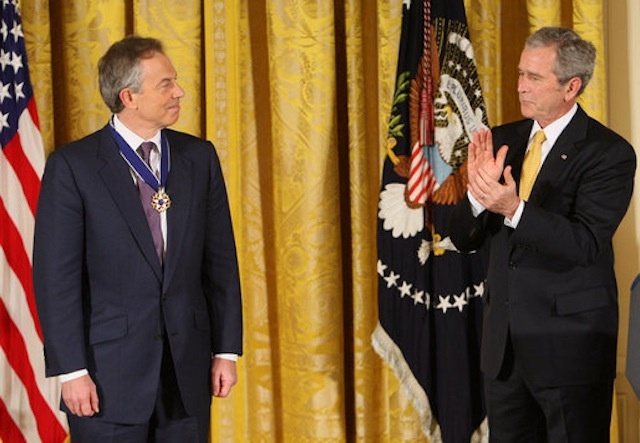![]()
All photos by Aubrey Edwards
No one invited the Prancing Elites to dance at the basketball game. They are not part of the halftime show taking place at center court. Their names are not listed in the program. Their outfits do not match either team’s motif.
The six young men sit at the end of a low-slung set of blond wooden bleachers—one in the front row, three on the next tier, and two at the top. Their posture is charm-school perfect, their hands resting on knees clasped close together. Each is dressed in a crisp green-and-white athletic shirt, cut short at the sleeves and midriff, with the dance team’s fierce dragon logo emblazoned on the chest. They wear shiny orange booty shorts, gleaming translucent tights, and matching looks of cool nonchalance, as if they can hardly count the number of times they’ve sat waiting to dance at a game like this.
For Kentrell Collins, the young man in the front row, this is literally the case. He's been dancing with the Prancing Elites for nine of his 26 years, and he’s spent more afternoons and evenings than he can recall poised in public places around Mobile, Alabama—a high school football or basketball game, a fashion or hair show, a party or club—prepared to unspool himself in a stylish flourish for anyone to watch.
The cadre of beautiful boys fidgets, glancing around at each other as if clarifying some last-minute minutia with nonverbal signals as DJ Jubilee blares through the loundspeakers: "Get it ready, get it ready, get it ready ready. Get it ready, get it ready, get it ready ready. I said giiiirl don’t you do that. I said boyyyy don’t you do that."
On what seems like an indiscriminate beat, Collins springs up with a coy tilt of his head to the left and a pop of his hip to the right, his palms extended before he begins to whirl his arms around and move his body as if it were comprised of singular, contiguous parts, each with its own elaborate series of precise gesticulations that meshes with the others to form a fluid, gyrating whole. The mastery and sass with which he dances clashes with the pedestrian setting—as the other members of the troupe arise in synchronous display, bringing the performance to an abrupt crescendo, a little girl in a puffy pink coat runs obliviously in front of them, at whom Collins casts a sidelong glance. There’s nothing other than dancing he’d rather be doing, but even in the short YouTube video that captures this moment, Collins’ eagerness to move beyond Mobile seems apparent.
Unexpectedly, Shaquille O’Neal may be Collin's ticket to stardom—or at least out of the Deep South. Now, Shaq is a tough person to impress. I met him once at a book signing in New Orleans for his autobiography, Shaq Uncut, and as I loitered in line with the throng of fans, I was struck by how utterly underwhelmed he seemed. This is a man who’s not only one of the greatest basketball players of all time, but such a tremendous athlete (and ego) that he starred in a television show for which he challenged other premier athletes to competitions in their own sport. In 2012, he earned a doctorate in education and told reporters he planned to go to law school next. His Twitter feed is relentlessly entertaining and followed by millions, and one day last June he tweeted "SHAQTIN A FOOL PRESENTS. THESE DUDES B JAMMIN" with a link to this video of the Elites. It spread wildly through cyberspace, surfacing on such disparate sites as Perez Hilton and Fox Sports. After seven years of posting videos online that rarely reached beyond pockets of black gay communities in the South, the dance troupe’s social media inboxes began to swell with requests for interviews and shows, as well as enthusiastic well-wishing from new admirers across the globe.
When I met the Elites a month later in Mobile for a picnic of Foosackly’s chicken, they were going over highlights and hijinx from a trip to Los Angeles from which they had returned the previous day. Producers of the Fox daytime talk show The Real had seen the video Shaq tweeted and flew the group out to perform live on the show, and they put the Elites up for an all-expenses-paid week-long stay. The Elites spent their days meeting with television executives, including reps from production companies owned by Tyra Banks and Dick Clark. As a student, a server, a customer service representative, a part-time dance instructor, and a hotel maid, respectively, the boys from Mobile succumbed to the expected foibles during their trip to Tinseltown—forgetting table manners while dining in sight of producers from America’s Next Top Model, having difficulty believing that $5,000 per-reality TV episode isn’t that much money, trying to open their own car doors despite their hired driver’s rebuffs. But as they told it, the trip was a success. All five were glowing, elated and exhausted and excited, their prettiness and youth and charm showing strong through their jet lag, a condition several of them had never before experienced, this trip being their first time on an airplane.
![]()
The style of dance the Prancing Elites perform is called j-setting, after the dance squad for Mississippi’s historically black Jackson State University, the Prancing Jaycettes. In 1970, the Jaycettes discarded their batons to free their limbs for new maneuvers—a somewhat radical development in the South, where baton-twirling majorettes had been a hallmark of college halftime shows for two decades. By the 1990s, the style had caught on at other Southern schools—Shaquille O’Neal almost certainly would have seen it during his time as a student at Louisiana State University—and a smattering of men had joined the ladies dancing on the fields and courts. Gay boys at the games were struck by the way the moves looked executed by male bodies and they began to adapt them for the club. Groups of young men honed routines to bring into the nightlife, dominating dance floors from Baton Rouge to Raleigh, the lead-and-follow format of j-setting allowing entire raucous parties to partake.
If the Prancing Elites feel at home dancing fabulously in the bleachers, it’s because they’ve been relegated there from the outset. Each had yearned to join his high school dance squad, to skip and sashay alongside the marching band at games and parades. But the dance squads did not admit men. Timothy Smith, who on the day of the picnic wore a knock-out black skirt, white blouse, and three-inch pumps, told me each of the to-be Elites was left to be "the little sideline person who’d just look and be like, 'Oh, I wish that was me there.'
"I was actually in the marching band at William B. Williamson High School," Smith said. "I played trombone for four years. My tenth-grade year, I got real close with the dance girls and they were like, ‘You should try out.’ But I was like, ‘Y’all, no. They ain’t going to let me on, try out, or get on the dance team.’ It used to hurt me so bad, because I wanted to just dance and have fun and perform, but they wouldn’t allow it. So I just stayed on the sidelines, and I would dance in the stands with a couple of my girlfriends."
High school, home, work—each of the Elites has danced through a minefield of hurt. Smith was fired from his job at a hotel for taking time off to go to Los Angeles by a supervisor he said had long been eager to rid the maid staff of its single homosexual. Collins faced physical abuse from his family.
"My brother used to try to fight me because I’m gay," he said. "There was one particular time I remember distinctly: I was staying with him and I had to go dance somewhere, and he literally tried to restrain me from going."
But success has a funny way of validating a person’s pursuits. As Collins, Smith, and I talked over coffee after the picnic, Collins received a text message that made him put down his phone and begin to weep. It was from the brother who had tried to fight him, and from the log in his smart phone, one could see it was the first message Collins had ever received from him:
"im proud of u lil bra kept doing ur thang with ur group love u from my family".
"I would’ve never thought that," Collins said, after a moment. "Because, growing up, they hated it. But I think they see that it’s something that I’m passionate about, and now they’re like, ‘He’s doing what he wants to do. I’m going to support him.’ I never would have thought that. Just to get that message … that’s all I’ve been waiting on."
![]()
The Deep South can be selectively tolerant—the Alabama heat prompts the Elites to practice after dark in the high school parking lot that has recently served as their studio. Any congregation of black men blaring music in an unsanctioned space in Mobile is bound to attract the attention of the police, but from the very first time the cops arrived, Collins said they have simply sat and watched, seeming half beffudled, half impressed.
This holiday season, the Elites encountered mixed feedback after organizers invited them to dance in the Christmas parade in Semmes, Alabama, population 3,115. They strutted the street in sexy Santa-inspired costumes behind two standard bearers flying the Elites’ banner and in front of a fortuitously matching fire truck. They were greeted with jeers and whining, and white parents told reporters afterward they should have been warned before accidentally exposing their children to such filth. The uproar prompted officials in Mobile to pull the Elites from the city’s annual New Year’s MoonPie Over Mobile parade—it was the first time the Elites had been invited—but the story catapulted the dancers' name once again through cyberspace. The buzz reached Huffington Post and ABC News and was enough to help the boys successfully fulfill a $15,000 Kickstarter campaign. Instead of dancing in the New Year’s parade, the Elites partnered with a local website to conduct a dance-crawl of sorts that night throughout downtown Mobile. It was met with more fanfare than their hometown has ever shown them before.
In November, the Elites auditioned for America’s Got Talent, continuing their pursuit in the long, illustrious Southern tradition that forces black artists to look elsewhere for recognition and support. Just as many jazz musicians from New Orleans have, throughout history, played to packed concert halls across Europe and returned home to book gigs in smoky bars, the Elites face a distinct ceiling in Mobile and are looking to opportunities on the coasts. Alabama is a long way from a widespread embrace of any gay black art. But Collins said he thinks it’s precisely the elements that are met with resistance and repression in the South that will make the Prancing Elites a hit on a national scale.
"We’re so rebellious to what society wants that the world loves everything we do, regardless of this society here," he said. "Because the world is much bigger than Alabama."
@nathancmartin
























